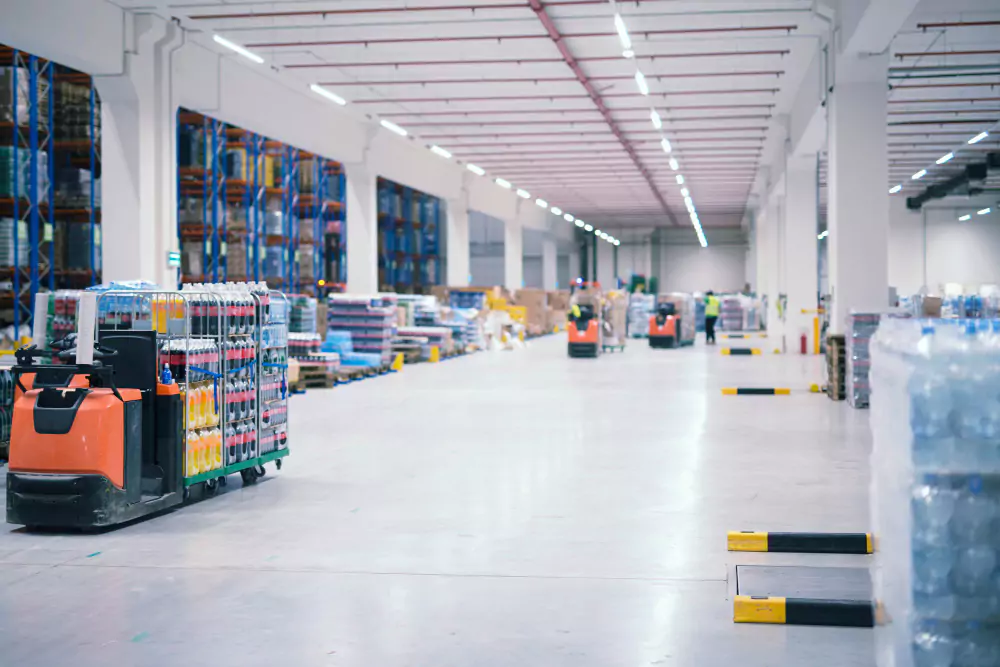Best Warehouse Construction Estimators
As a seasoned construction estimator with years of hands-on experience in material takeoffs and cost analysis, I’ve observed a strong shift in warehouse construction trends heading into 2025. Driven by e-commerce growth, automation, and sustainability demands, warehouse builds are now smarter, more efficient, and require precise estimating from the early design phase.
Construction Estimator Services
Planning a warehouse construction project without an accurate cost estimator can lead to unexpected delays and budget overruns. A warehouse construction estimator helps you determine realistic building costs, factoring in materials, labor, permits, site prep, and equipment installation. Whether you’re building a distribution center, storage facility, or industrial warehouse, a professional estimate ensures smarter budgeting and better project planning. With rising commercial construction costs in the U.S., having a detailed warehouse building cost estimate allows business owners and contractors to avoid costly surprises and make confident decisions.
Table of Contents
here is complete breakdown on Estimation & Takeoff Services for building Warehouses
Key Trends in 2025 Warehouse Construction
- Pre-Engineered Steel Buildings (PEMB):
More developers are opting for pre-engineered steel structures for faster delivery timelines and cost-effectiveness. These buildings minimize on-site labor and improve material predictability—something essential for accurate construction takeoff services. - Automation and Smart Warehousing:
Modern warehouses are being designed with high-bay racking systems, conveyor systems, and robotics in mind. This requires estimators to factor in special foundation reinforcements, loading dock configurations, and utility needs during the pre-construction phase. - Sustainable Design & Materials:
Green building certifications (like LEED or BREEAM) are no longer optional. Insulated metal panels, solar-ready rooftops, and energy-efficient HVAC systems are now common—and need to be captured precisely in the cost estimate. - Urban Infill Warehousing:
With last-mile logistics in demand, smaller urban warehouses are replacing large rural hubs. These sites require tight coordination on zoning, utility planning, and renovation estimates—making expert estimating and takeoff outsourcing even more valuable.
Real-World Example
Take, for instance, a recent 80,000 sq ft fulfillment center in Dallas, TX. Our team was brought in for digital takeoff and cost estimation early. By leveraging BIM tools and applying unit cost data to every phase (from concrete slabs to MEP systems), we were able to reduce cost overruns by 12% and speed up contractor bidding by 3 weeks.
Need Expert Warehouse Estimating Support?
- Knowledge of industrial building codes
- Familiarity with PEMB specs and material assemblies
- Ability to integrate with project management software
- Experience in digital takeoff platforms like PlanSwift, Bluebeam, or STACK
- Transparent, line-by-line cost breakdowns
Utopian Takeoffs specializes in warehouse cost estimating and material takeoff services across the USA. From shell building costs to MEP layouts and interior buildouts, we help you plan accurately and bid confidently.
Factors That Influence Warehouse Construction Cost
Accurately estimating warehouse construction costs in 2025 requires more than just material pricing—it demands a nuanced understanding of design variables, site conditions, and scope clarity. As an experienced construction estimator, I’ve seen how overlooking a single cost factor can throw an entire project off track. Whether you’re self-managing or outsourcing to takeoff services, understanding these cost influencers is crucial for your precision.
Impact of Total Square Footage on Cost
Warehouse cost is typically calculated on a per-square-foot basis, but this isn’t a fixed number. Larger spaces benefit from economies of scale, but they also bring added structural, mechanical, and logistical complexities.
- Small warehouses (under 10,000 sq ft):
Lower overall construction cost, but higher per-square-foot rates due to fixed costs (permits, mobilization, utility connections). - Large warehouses (20,000+ sq ft):
Reduced per-square-foot costs but require more detailed estimating for:
- Fire suppression systems
- HVAC zoning
- Clearances for racking and automation
Pro Insight: In 2025, average warehouse construction costs range from $85–$135 per sq ft, depending on customization, building type, and region.
Clear Span vs. Multi-Bay Layouts
The building’s structural layout also significantly impacts cost:
- Clear Span Design
No interior columns. Ideal for forklift movement, pallet racking, or machinery setups.
Pros: Maximum usable space
Cons: Higher cost due to heavier trusses and longer spans - Multi-Bay Layout
Interior columns spaced throughout the building.
Pros: Lower structural cost
Cons: May limit flexibility for automation or storage flow
Real-World Cost Comparison: 5,000 vs. 20,000 Sq Ft
Let’s say you’re planning a standard warehouse build:
| Warehouse Size | Layout Type | Approx. Cost Range (2025) | Notes |
| 5,000 sq ft | Multi-bay | $450,000 – $625,000 | Higher per-sq-ft due to startup/fixed costs |
| 20,000 sq ft | Clear span | $1.8M – $2.6M | Bulk material pricing, but more MEP & foundation planning |
Estimator Tip: Always consider design intent early. Choosing clear span may increase steel tonnage by 20–30%, which must be reflected in your structural takeoff and bid.
Why This Matters for Takeoff Services?
If you’re working with outsourced estimators or digital takeoff providers, be sure to share:
- Full floor plans
- Desired layout (clear span or column bay)
- Future-use cases (mezzanine additions, automation equipment, cold storage)
This ensures accurate quantity takeoffs for concrete, structural steel, roofing, and MEP systems—helping you plan more confidently and bid more competitively.
Type of Warehouse (Storage, Distribution, Cold Storage)
Warehouse construction cost varies significantly depending on its intended use. As an experienced estimator, I always advise clients that the type of warehouse they build is directly linked to the level of complexity—and cost—of the design and materials required.

Standard Storage Warehouses
These are the most cost-effective to build and are typically used for dry goods or general inventory. Features often include:
- Basic slab-on-grade foundation
- Metal wall panels or CMU block
- Minimal mechanical, electrical, and plumbing (MEP)
Average Cost (2025): $85–$110 per sq ft
Distribution Centers
Built for logistics, shipping, and receiving, these warehouses require:
- High ceilings (28–40 ft)
- Reinforced flooring for forklifts
- Multiple loading docks and staging zones
- Advanced fire protection systems
Average Cost (2025): $110–$140 per sq ft
These facilities also demand accurate takeoff services for dock equipment, racking, lighting, and HVAC systems.
Cold Storage or Climate-Controlled Warehouses
Cold storage is the most expensive warehouse type due to:
- Insulated panels (high R-value)
- Refrigeration systems
- Humidity and temperature sensors
- Redundant electrical systems for cooling
Average Cost (2025): $180–$250+ per sq ft
Real-World Insight: For a 10,000 sq ft cold storage facility in Phoenix, our detailed takeoff accounted for polyurethane insulated panels, vapor barriers, and refrigeration units—helping the client prevent a 15% cost overrun during the bidding phase.
Building Material Choices
Your choice of materials plays a vital role in both construction cost and long-term performance. From a cost estimating and quantity takeoff perspective, knowing the material makeup early can reduce change orders and improve bid accuracy.
Steel Structures
- Common in pre-engineered metal buildings (PEMB)
- Fast to assemble and cost-efficient
- Ideal for clear span designs
Lower upfront cost, but requires galvanization or fireproofing for longevity
Concrete Warehouses
- Cast-in-place or tilt-up wall systems
- Strong fire resistance and sound insulation
- Better suited for high-traffic or multi-tenant buildings
Higher initial cost, but reduced maintenance and insurance premiums
Hybrid Builds (Steel + Concrete)
- Combine the speed of steel with the durability of concrete
- Common in multi-use or multi-story warehouse facilities
Estimator Tip: Hybrid structures often require more complex structural takeoffs, which is where outsourcing to digital takeoff services can save time and improve accuracy.
Prefabricated vs. Custom-Built Warehouses
- Prefabricated Warehouses:
- Ideal for budget-conscious or fast-track projects
- Lower design flexibility but faster delivery and predictable cost
- Require fewer on-site labor hours
- Custom-Built Warehouses:
- Fully tailored to unique operational or branding needs
- More complex structural engineering
- Higher cost due to longer lead times and specialized finishes
Pro Estimating Insight: We recently delivered a prefabricated steel takeoff package for a 25,000 sq ft warehouse that saved the client over 3 weeks in schedule—and 8% in material waste—compared to a custom spec build.

Why These Details Matter in Takeoff Services?
Outsourced estimators who understand the warehouse type and building materials can:
- Deliver more accurate cost forecasts
- Account for thermal performance, structural loads, and MEP requirements
- Reduce bidding errors and scope gaps for contractors and developers
Site Location & Preparation Costs
One of the most overlooked—and often underestimated—cost factors in warehouse and garage conversion projects is site preparation. As a professional construction estimator, I can confidently say that the location of your project and the condition of your site can significantly influence your bottom line.
Key Site Prep Considerations
- Land Grading & Excavation:
Uneven or sloped land may require extensive grading, backfill, or retaining walls—adding to your overall estimate. - Drainage & Soil Conditions:
Poor soil quality or lack of proper stormwater drainage systems can lead to additional sitework and engineering requirements. - Permit Fees & Local Codes:
Every municipality has its own zoning regulations and permit fees. In areas with stricter building codes, expect higher design, compliance, and inspection costs.
Regional Cost Variations (California vs. Texas vs. Midwest)
Construction pricing varies significantly based on geographic location:
| Region | Site Prep Cost Range (2025) | Notes |
| California | $6–$15 per sq ft | Higher due to seismic code requirements and labor costs |
| Texas | $4–$10 per sq ft | More favorable regulations, but rising costs in metro areas |
| Midwest | $3–$8 per sq ft | Lower labor and land costs, weather-dependent timeline |
Pro Estimator Insight: On a recent garage-to-office conversion in Los Angeles, we encountered grading issues and ADA compliance challenges that added over $12,000 in unexpected costs—prevented by pre-construction takeoff review and code check.
Utilities, HVAC, and Insulation
Whether you’re converting a garage into a livable space or building a climate-controlled warehouse, utilities and mechanical systems play a crucial role in both the construction budget and operational performance.
Cost of Utility Integration
- Plumbing: Adding restrooms or sinks? Expect trenching, pipework, and venting to increase the scope.
- Electrical Systems: Power panels, outlets, and lighting must meet new load requirements.
- HVAC Installation: Ductwork, mini-split units, or full heating/cooling systems all depend on usage type and climate zone.
Tip: Always include electrical load calculations and mechanical system sizing in your takeoff to avoid underbidding.
Energy Efficiency & Long-Term ROI
Insulation and efficient HVAC systems may raise upfront costs but provide better long-term value through:
- Lower energy bills
- Greater indoor comfort
- Potential rebates or tax credits (especially in green-certified projects)
Real-World Example: For a 600 sq ft garage converted into a guest suite in Chicago, we specified closed-cell spray foam insulation, a ductless HVAC system, and LED lighting. The result? A 28% annual savings in energy costs and a higher resale value.
Why Accurate Estimating for Site and Utility Costs Matters?
These elements are commonly missed or under-scoped in early-stage budgeting. Outsourcing your takeoff services ensures:
- Inclusion of trenching, insulation R-values, HVAC tonnage, and MEP fittings
- Better alignment with local construction norms and material availability
- Reduced risk of costly change orders during execution
Labor and Construction Timeframe
Labor is one of the most volatile cost drivers in any garage conversion or warehouse construction project. As a seasoned estimator, I’ve watched how labor shortages, wage inflation, and project backlog can significantly shift both timeline and cost—even with a well-prepared estimate.
How Labor Shortages and Inflation Affect Cost?
- Skilled Trades Availability: In 2025, demand for licensed electricians, plumbers, and HVAC techs continues to outpace supply—especially in metro areas.
- Wage Inflation: Average construction labor wages have increased by 8–12% year-over-year due to material price hikes and union renegotiations.
- Project Delays: Extended lead times for subcontractors can delay inspections, interior finishing, and final occupancy approvals.
Estimator Tip: Always include labor escalation clauses in your bids and estimates, especially for multi-month builds or when scheduling during peak seasons.
Real-World Example: A 550 sq ft garage conversion in Seattle, delayed due to an HVAC technician shortage, extended the build by 3 weeks and added $4,500 in labor contingency costs—something we flagged early in our takeoff and scheduling plan.
Warehouse Construction Cost Breakdown (2025 Update)
Understanding warehouse construction cost at a granular level helps developers and contractors budget effectively, minimize risk, and secure financing. A well-prepared estimate supported by digital takeoff services ensures transparency and precision from the start.
Average Cost Per Square Foot (by Type)
| Warehouse Type | Avg Cost (Low-End) | Avg Cost (High-End) |
| Basic Storage Warehouse | $75/sq ft | $120/sq ft |
| Climate-Controlled | $120/sq ft | $180/sq ft |
| Distribution Center | $100/sq ft | $160/sq ft |
These estimates reflect 2025 material rates, labor costs, and design trends. They vary depending on location, usage type, and code requirements (e.g., seismic, fire suppression, energy compliance).
Line-by-Line Costing Example (20,000 Sq Ft Warehouse)
Here’s a real-world-style cost breakdown to help visualize where your warehouse budget goes:
| Component | Estimated Cost Range |
| Foundation | $200,000 – $300,000 |
| Steel Framing | $400,000 – $600,000 |
| Roofing (TPO or Metal) | $180,000 – $250,000 |
| Interior Finishing | $150,000 – $220,000 |
| Doors, Docks, Racking, Lights | $250,000 – $400,000 |
| Utilities + Labor (MEP) | $300,000 – $500,000 |
| Total Estimate (Range) | $1.48M – $2.27M |
Estimator Note: This breakdown doesn’t include land acquisition, design fees, or contingency—but serves as a baseline for accurate quantity takeoffs and bid preparation.
Why Line-Item Estimating Matters for Takeoff Accuracy?
Outsourcing your construction takeoff services ensures:
- Precision in material quantities and labor hour forecasts
- Scope alignment across architectural, structural, and MEP drawings
- Better bid competitiveness and reduced scope creep
- Flexibility to scale or modify based on client preferences or design changes
Warehouse construction in 2025 demands more than traditional budgeting—it requires precise estimating grounded in real-time data, smart design, and deep industry experience. As a professional construction estimator, I’ve seen how accurate takeoffs and detailed cost breakdowns directly impact a project’s timeline and profitability. At Utopian Takeoffs, we specialize in warehouse construction estimating and material takeoff services across the U.S. From PEMB to custom builds, our experts help you plan smarter, reduce risk, and bid confidently—every step of the way.
Prefabricated vs. Traditional Warehouse Construction
As a estimator, one of the most common decisions clients face in warehouse planning is choosing between prefabricated (modular) construction and traditional, custom-built methods. Each option has clear advantages depending on your timeline, budget, and intended use.
When done right—with the support of accurate construction takeoff services—prefab and traditional builds can both deliver excellent ROI. But understanding the key differences upfront is essential for cost control and operational success.
Prefabricated Warehouses: Speed and Cost Efficiency
Prefabricated warehouse construction involves manufacturing components (steel frames, wall panels, trusses) off-site and assembling them quickly on-site. These pre-engineered metal buildings (PEMBs) have become especially popular for commercial and industrial use in 2025.
Advantages of Prefab Warehouses
- Faster Construction Time: Up to 30–50% quicker than traditional builds
- Lower Labor Costs: Fewer man-hours on-site due to modular assembly
- Predictable Pricing: Minimal design variation allows more accurate cost estimating
- Scalable: Easily expandable with bolt-on component
Limitations of Prefab
- Limited design flexibility (fixed spans, roof pitches, finishes)
- Less suitable for sites with unusual grading or zoning restrictions
- May not meet local design aesthetics or multi-use requirements
Use Case: When Prefab Saves Time and Money
Last month we completed a cost estimate for a 15,000 sq ft prefab warehouse in Dallas, TX, designed for light manufacturing. By using PEMB components and coordinating early with the supplier, we reduced the overall construction time by 6 weeks and saved nearly $150,000 in labor and materials.
Takeoff services were crucial here—we identified exact quantities of steel, insulation, roofing fasteners, and MEP items, helping the contractor avoid over-ordering and delays.
Traditional (Custom-Built) Warehouse Construction
Traditional warehouses are stick-built or cast-in-place concrete structures designed from the ground up. These builds offer full customization for layout, functionality, and architectural elements.
Advantages of Traditional Warehouses
- Maximum Design Flexibility: Ideal for mixed-use, multi-level, or urban infill project
- Superior Durability: Concrete and masonry construction offers enhanced fire resistance and sound insulation
- Custom Integration: Better suited for automation systems, cold storage zones, or specialized workflows
Limitations of Traditional Construction
- Longer construction timelines
- Higher upfront costs
- More complex permitting and design coordination
Custom-Build Use Case Example
For a 40,000 sq ft distribution center in New Jersey, we supported a traditional warehouse build due to site-specific zoning, high-traffic access needs, and multiple loading bays. Though the build cost was higher—around $145 per sq ft—the long-term functionality and operational ROI justified the investment. Our detailed takeoff included slab reinforcements, fire-rated walls, dock equipment, and racking layouts to ensure accuracy during bid and procurement.
How Estimating and Takeoff Services Support Both Models?
Whether prefabricated or custom-built, your success hinges on precise material takeoffs and realistic cost projections. Outsourcing takeoff services helps:
- Identify accurate steel tonnage, insulation values, and MEP scopes
- Avoid over-budget surprises due to scope creep or incomplete plans
- Adjust for location-specific code, labor, and supply chain challenges
Using a Warehouse Construction Estimator Tool
In today’s fast-paced construction environment, clients and contractors can’t afford vague estimates or outdated pricing. That’s where a warehouse construction estimator tool becomes a game-changer. Whether you’re planning a garage conversion or scaling up to a large warehouse build, digital estimator tools can save time, reduce costly errors, and support better project planning.
As a estimator, I’ve used these tools to speed up budgeting, align expectations with clients, and support more competitive bids.
What It Does and Why It Helps?
A reliable construction estimator tool simplifies complex calculations and turns project variables into clear, actionable cost projections. Here’s how it works:
Key Functions
- Calculates Total Cost: Based on inputs like square footage, material type, structural layout, and utility needs.
- Scenario Comparison: Compare multiple designs, roof systems, wall assemblies, and insulation levels side-by-side.
- Budget Forecasting: Estimate how design or location changes affect your bottom line.
- Schedule Planning: Helps predict timelines based on project scope and regional labor availability.
Features to Look For in a Good Estimator Tool
Not all construction estimator tools are created equal. To get accurate, professional-level results, look for tools that include the following must-have features:
Essential Features
- Custom Dimensions Input
Input exact garage or warehouse dimensions to generate tailored estimates. - Location-Based Pricing Adjustments
Regional labor rates and material costs vary. Tools should factor in geographic pricing (e.g., California vs. Midwest). - Material Selector
Toggle between steel, wood framing, concrete, or hybrid systems. Some tools even offer insulation and finish options. - Real-Time Pricing Updates
Avoid outdated pricing by using tools synced with current market rates for materials, labor, and equipment. - Exportable Reports (PDF/Excel)
Shareable reports are ideal for bids, proposals, or client presentations. Look for tools that let you download or print detailed breakdowns.
Estimator Tip: I always cross-check estimator outputs with digital takeoff software (like PlanSwift or Bluebeam) to validate quantities before finalizing a proposal.
Example Walkthrough of an Estimator Tool
Let’s walk through a quick example using a professional warehouse estimator tool.
Scenario: 10,000 Sq Ft Distribution Center
- Input Dimensions: 10,000 sq ft, 30 ft clear height
- Choose Building Type: Distribution center
- Material Selection: Pre-engineered steel, insulated metal panels
- Region: Atlanta, GA
- Additional Features: Loading docks, climate-controlled zone, LED lighting
Estimated Total Cost
🔹 Low-End Estimate: $1.05 million
🔹 High-End Estimate: $1.5 million
🔹 PDF Export: Includes line-by-line breakdown for foundation, MEP, framing, roofing, and labor.
Bonus Insight: This same tool helped a client identify a potential $85,000 savings by adjusting roof slope and switching to TPO roofing—identified during the design comparison phase.
How This Aligns with Takeoff Services?
Warehouse and garage construction estimator tools are powerful when paired with professional takeoff services. They allow:
- Early-stage budgeting based on accurate quantities
- Faster client approvals and smoother bidding
- Reduced guesswork in scope planning and material procurement
How to Reduce Warehouse Construction Costs in 2025?
In 2025, warehouse construction costs are influenced by fluctuating material prices, skilled labor shortages, and rising interest in automation and energy efficiency. But with careful planning and a solid estimating strategy, significant cost savings are still possible—without sacrificing quality or long-term performance.
As an experienced construction estimator, I’ve worked with hundreds of clients across industries, and I can confidently say this: reducing costs doesn’t mean cutting corners—it means making smarter decisions.
Smart Design Tips
Design decisions made early in the planning phase can have a dramatic impact on both construction costs and long-term operational efficiency.
Optimize Ceiling Height (Without Overbuilding)
Bigger isn’t always better. Increasing clear height may improve racking capacity, but going higher than your operational needs can unnecessarily increase structural and HVAC costs.
- Sweet spot for many distribution centers: 28–32 ft
- Taller heights require stronger foundations, more steel, and larger HVAC systems
Eliminate Unnecessary Interior Build-Outs
Interior offices, mezzanines, breakrooms, and restrooms drive up costs in plumbing, finishes, and HVAC. Keep layouts lean—design only what’s functionally required.
- Use modular offices if needed post-occupancy
- Avoid hard walls for areas not critical to daily operations
Material Selection & Supplier Negotiation
Material selection plays a central role in warehouse construction budgeting. The trick is knowing where to save—and where not to compromise.
Know Your Structural Options
- Pre-engineered steel buildings (PEMB) offer cost-efficiency and fast installation
- Hybrid systems (concrete walls + steel roof) are best for durability but cost more
- Tilt-up concrete panels offer long lifespan and better fire resistance, though they require higher upfront spend
Don’t Skimp on Key Performance Areas
- Insulation, roofing systems, and floor finishes directly impact operational costs
- Choosing low-cost roofing may save today but cost more in repairs, leaks, or energy loss later
Leverage Bulk & Local Supplier Pricing
Negotiate directly with regional suppliers and fabricators for:
- Reinforced concrete
- Steel members
- Dock equipment and doors
This ensures you get better freight rates and lead times.
Estimator Pro Tip: On a 25,000 sq ft warehouse in the Midwest, we saved $40,000 by sourcing roof purlins and dock levellers from a local vendor instead of using a national distributor.
Timing Your Project Right
Seasonal market conditions have a big impact on labor and material costs. Scheduling your build during the right time of year can reduce budget overruns and supply chain delays.
Avoid Peak Construction Seasons
- Late spring to early fall (May–September) sees high demand for trades and materials
- Prices surge and subcontractor availability drops
Build During Off-Peak Months
- Target winter or early spring (Jan–March) if climate and site conditions allow
- Contractors are more flexible, and material lead times are often shorter
Real-World Example: A client in Georgia delayed a 30,000 sq ft warehouse build by 3 months to avoid summer peak. That decision saved them $75,000 on labor and steel procurement costs.
Why This Ties Back to Estimating and Takeoff Services?
Every cost-saving strategy begins with accurate quantity takeoffs, smart material planning, and early scope definition. Outsourcing takeoff services to professionals ensures:
- No detail is missed in estimating structural, MEP, and interior quantities
- You can compare design alternatives with real cost data
- Your bids are competitive—and profitable
Final Conclusion- Best Warehouse Construction Estimators
Warehouse construction in 2025 demands more than traditional budgeting—it requires precise estimating grounded in real-time data, smart design, and deep industry experience. As a professional construction estimator, I’ve seen how accurate takeoffs and well-informed cost breakdowns directly impact a project’s timeline and profitability. Whether you’re building a prefab facility or a custom distribution center, partnering with expert estimators ensures cost-efficiency, fewer delays, and better decision-making from concept to completion. Let data guide your build, not guesswork.

